Are you still waiting for your apple tree to put out leaves this spring? Perhaps you see signs of the tree waking up, but there’s still no leaf in sight. Continue reading to learn why this happens, and more importantly, what you can do to encourage the tree to get growing.
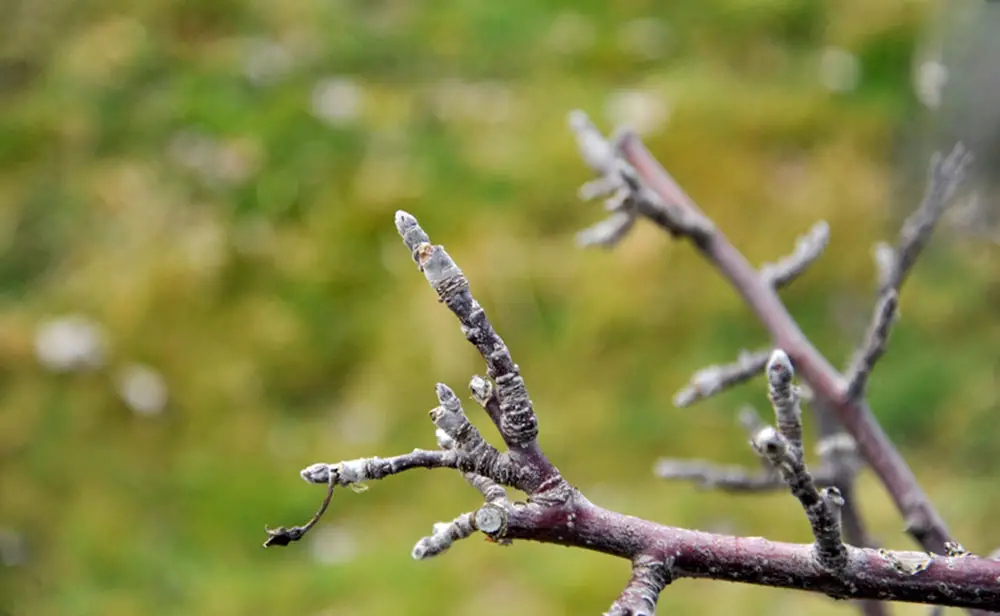
We may receive commissions from purchases made through links in this post, at no additional cost to you.
Most of the articles I write on The Fruit Grove are a direct result of something that has happened in my garden. In this case, my one-year-old ‘Anna’ apple tree struggled to break dormancy in its second spring.
I planted this tree and started growing it as an espalier against the fence. It grew so well the first year, and I had no reason to worry that there would be any problems the following season.
However, the next spring the tree was extremely slow to wake up and begin putting out leaves. The buds swelled and looked like they were about to open…for about 2 months. Long after the tree should have started leafing out, it was still bare.
I’m happy to report that I discovered the reason my tree was slow to wake up after winter (read on to see what it was!), and it is now green and thriving. But if your tree has had this same problem, continue reading to discover why your apple tree may struggle to break dormancy, as well as suggestions for how to correct these problems.
Watch the video below to see how I discovered the problem with my apple tree…and what I did to correct it!
1. Check if the Tree is Still Alive
This may seem obvious, but it’s a good idea to double check! A dead or dying tree will have branches that are brittle, grey, and dried-out looking. A healthy tree’s branches are supple and plump.
To be sure that the tree hasn’t died, scratch the bark surface gently with your fingernail or a very sharp, sanitized knife. If the tissue under the bark is bright green, the tree is still very much alive. If the exposed tissue is grey or dried-out looking, the branch (or the whole tree) is dead.
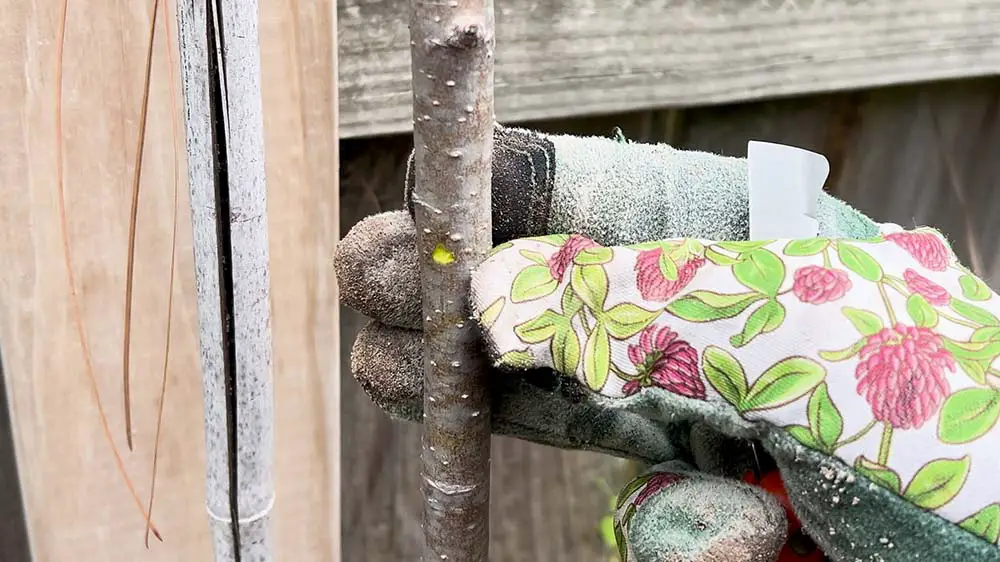
Do this scratch test on a few different branches as well as on the trunk of the tree. If the tree is still alive, then there is a chance it may yet wake up and continue growing. Check for other problems on this list that may be contributing to the delay.
2. Consider the Specific Variety
Different apple tree cultivars have different growing habits, including the exact timing of when they break dormancy, bloom, and fruit. Before looking for other problems, do a little research on your apple cultivar.
Is it a late-blooming apple variety?
Apple trees begin to leaf out in spring and send out blossoms shortly after. However, due to differences in climate and individual apple varieties, this can happen any time between late February and May. It’s possible that an apple tree may be slow to leaf out simply because it is a late bloomer.
Check out this bloom/pollination chart put out by Food Forest Nursery. It categorizes common apple varieties by their bloom time (although it’s not exhaustive…there are thousands of apple varieties!) and potential pollination partners.

Curious about any garden-related terms? Click on a highlighted word in the text, or visit The Fruit Grove Glossary to find out more.
Did it get the right amount of chill hours?
Every apple tree needs a certain number of chill hours before it can break dormancy and develop fruit. Apple chill hour requirements range from about 150 to more than 1000 hours of time spent below 45°F during the winter.
Double check the chill needs of your apple variety. If the tree has received significantly less chill time than it requires, it may struggle to come out of dormancy. Unfortunately, there isn’t much you can do to fix this, other than making sure to plant a tree that corresponds to the average number of chill hours in your climate.
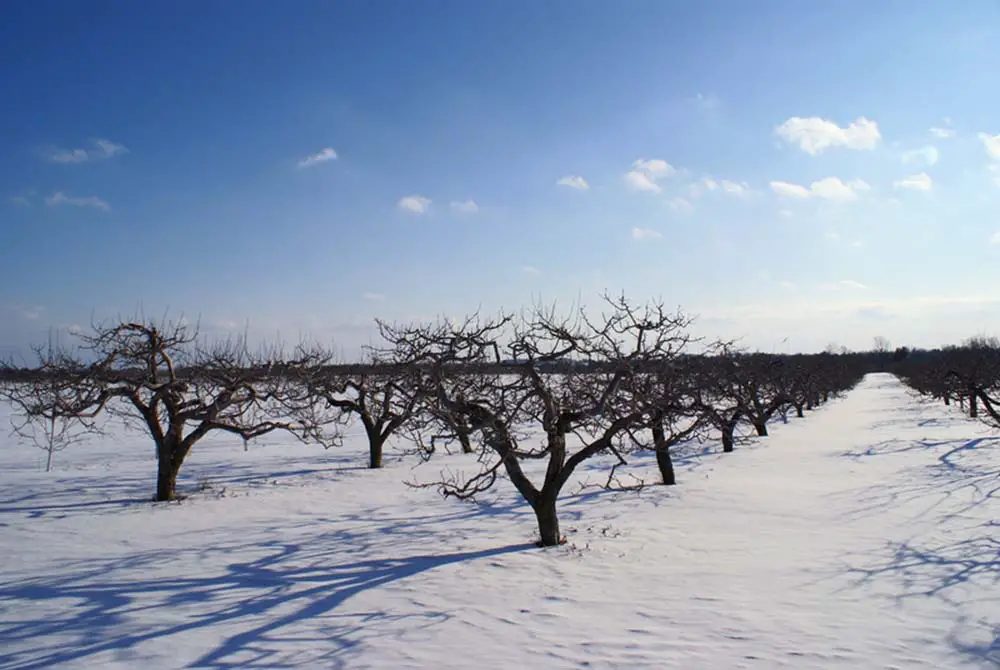
3. Look for Signs of Damage
Observe the tree to discover whether one of the following is causing the delay:
Pests
Was there a significant pest infestation last season that severely stressed the tree? Do you see signs of insect larvae, or any insects themselves? Overwintering pests are more likely to be an issue if the tree is already stressed out, either by a past infestation or some other problem.
Diseases
Look for signs of fungal growth on the trunk and branches. Are some limbs dead, even if part of the tree is still alive? Check the bark for any abnormalities or discoloration. All of these may be signs that there is a fungal or bacterial disease present, which could cause the tree to struggle.
For example, crown or collar rot is a common cause of death for apple trees. It’s a disease caused by Phytophthora fungal spores, and it can cause a tree to drop its leaves prematurely, or be slow to leaf out in the spring. The bark at the base of the trunk may look brown and slimy, which indicates that the tree’s roots are infected.
Rodents
Check the base of the trunk for evidence that some critter has been gnawing on the tree. If the damage is bad enough, it could make the tree more susceptible to disease problems, pest infestations, or cold injury.
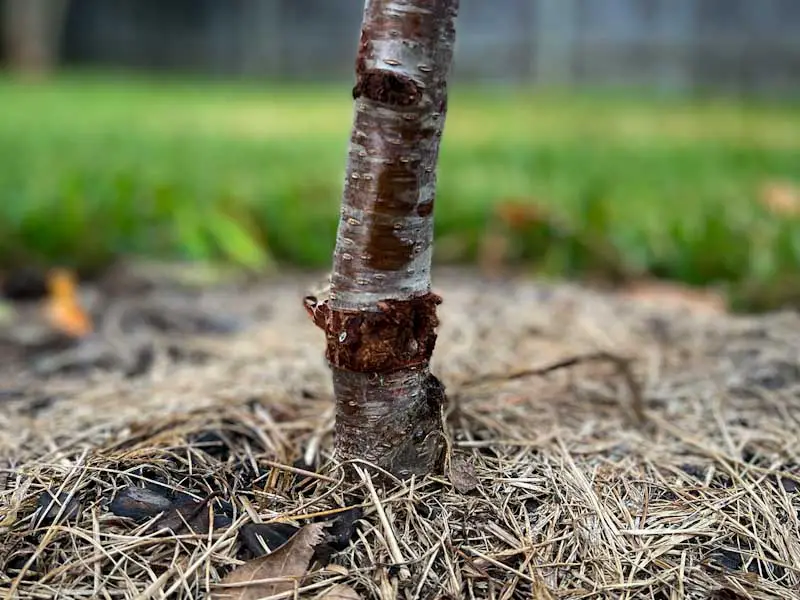
Winter Damage
Apple trees are generally very cold hardy, so significant cold damage is rare. However, an extreme cold snap, especially as winter is coming to an end, may cause some dieback or delay in growth.
Prune away any dead or damaged branches. Check the individual buds for cold damage. A damaged bud will look shrunken and will eventually darken and fall off. The tree may put out a second round of buds, but it will take longer for the tree to leaf out. If the damage is severe enough, the tree may not produce any fruit this season.
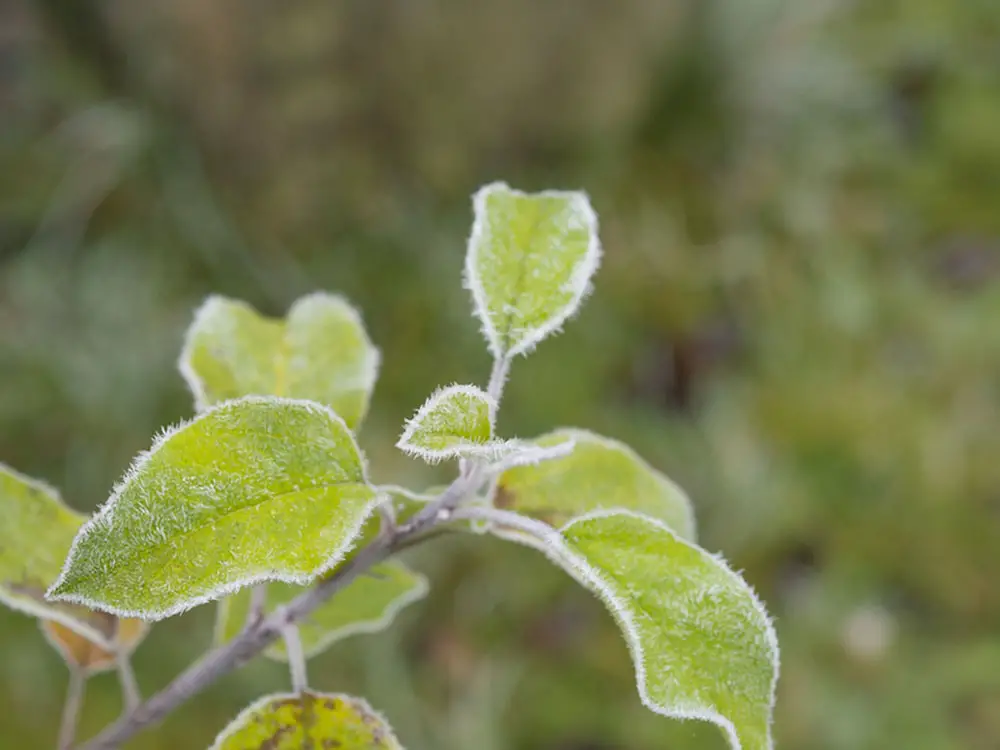
4. Think About Tree Care
An apple tree that is under prolonged stress or that doesn’t get what it needs at the right time may struggle to begin growing. Assess whether you need to make adjustments in your tree care.
Water Stress
Water stress – whether due to watering too much or too little – can cause an apple tree to go into “survival mode.” If the tree has been severely underwatered, even during the previous growing season, it may still be recovering and not have the energy to wake from dormancy.
Too much water, especially in heavy, slow-draining soil, can quickly lead to root rot, fungal disease, and tree death. The roots of an overwatered apple tree will suffocate, causing the tree to stop growing. If the ground has a chance to dry out there may be no long-term damage, but it could cause the tree to delay leafing out.
Lack of Nutrients
It takes a lot of energy for an apple tree to start growing after lying dormant all winter. The purpose of dormancy is both to protect the tree from the cold and to store up energy for the following year. However, if the tree doesn’t have access to the necessary nutrients, it may struggle to wake up in spring.
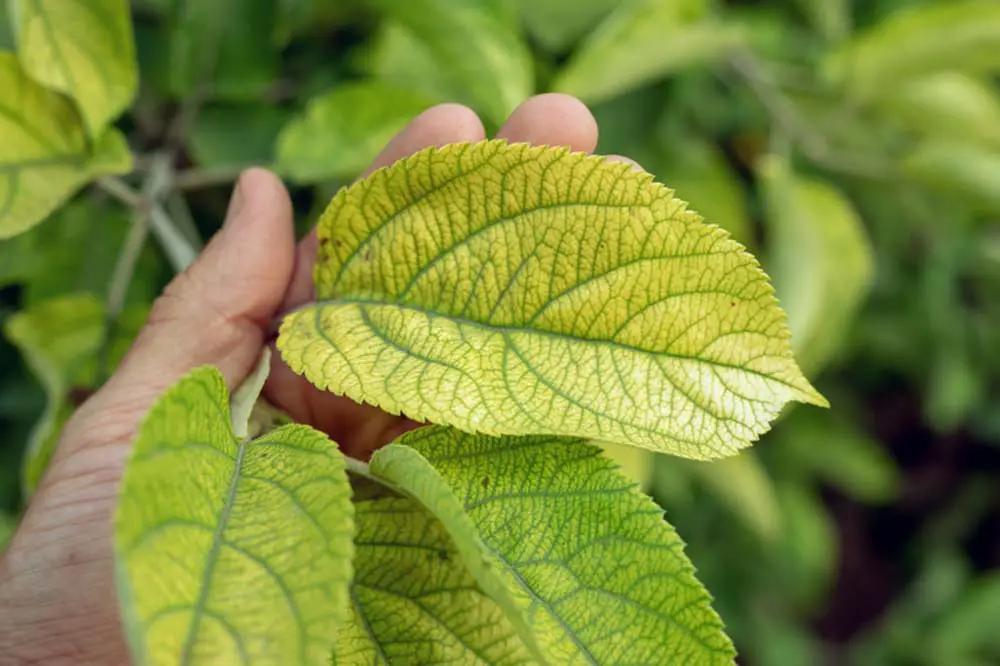
Fertilizing is a complicated topic that depends on a lot of factors – soil type, amount of organic material, soil health, tree age, etc. But your tree may need a boost of nutrients from fertilizer to kickstart growth.
5. Look Below the Soil
If you don’t notice any of the symptoms mentioned above, it’s time to carefully dig around the tree and check out what’s happening underground.
Is it buried too deep?
When planted correctly, an apple tree’s roots should begin just at or below the soil line. When the root ball is planted too deeply, the bark at the soil line begins to deteriorate, stressing the tree and preventing it from taking up and storing enough nutrients to support growth (source).
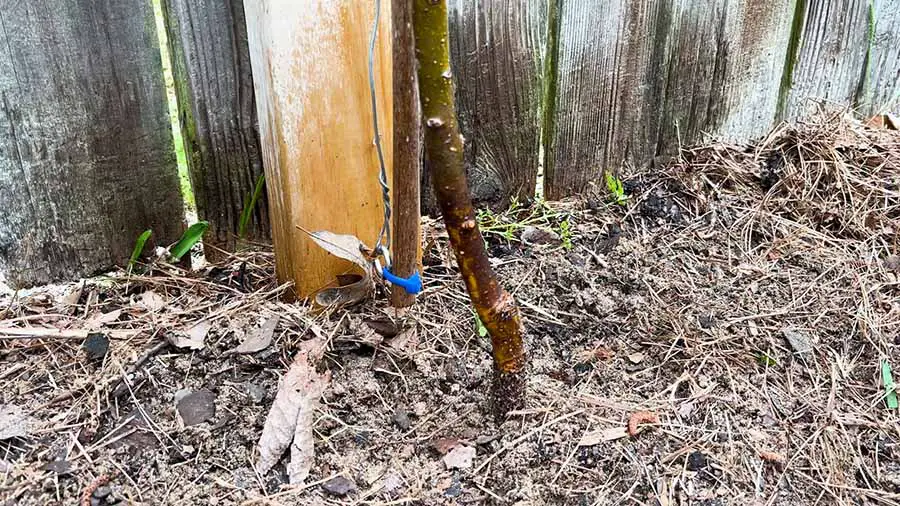
A tree that’s planted too deep will slowly die over several seasons. It may leaf out in spring, but then struggle in the heat of summer. Or, it may have trouble breaking dormancy in early spring because it didn’t store up enough nutrients the previous season.
Check if the graft union is visible above the ground (many apple trees are grafted onto a disease-resistant or dwarfing rootstock). Also look for root flare, the widening of the trunk at the soil line. If you can’t see either the graft union or root flare, chances are your tree is planted too deep.
(In case you’re wondering, this was the issue with my tree! The tree had been potted up too deeply at the nursery and the graft union was buried. I planted the tree at the same depth as it was in the nursery pot, which was too deep by about 6 inches.)
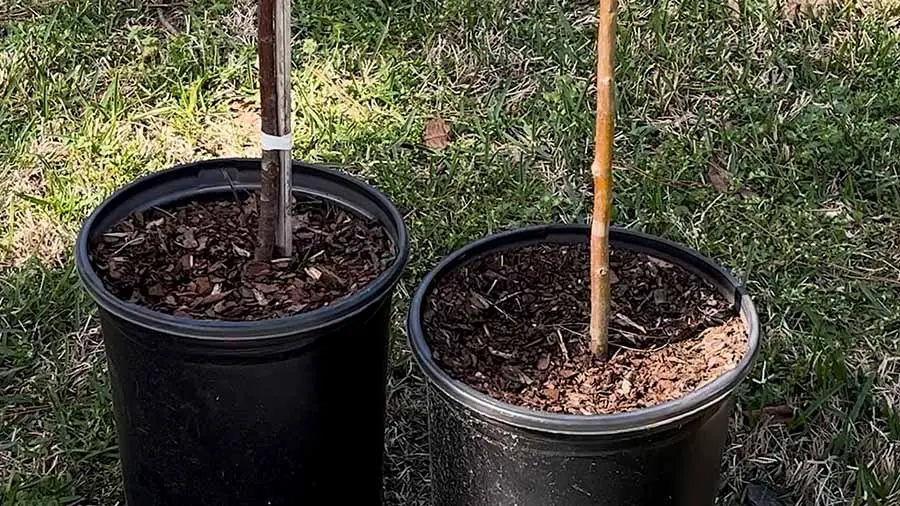
Is there root damage?
Loosen the soil around the tree with your hands and check the condition of the roots. Are they squishy and rotten-looking? If so, it may be an issue of root rot, possibly because of poor soil drainage or too much moisture.
Are the roots wrapped in a tight ball, or are they encircling the base of the trunk? This is called root girdling, and it can happen as a result of the tree being planted at the wrong depth. This can also happen if the tree sat for too long in a pot before being planted. When roots became potbound, they can begin to grow around the pot. Even after planting in the ground, the roots may continue to grow in a circle, essentially choking the tree.
Do you see little round “knots” all over the roots? Root knot nematodes are microscopic organisms in the soil that feed on roots. They cause damage over time that prevents the roots from receiving water and nutrients, eventually killing the tree (source).
How to Encourage an Apple Tree to Leaf Out
In general, the way to help a struggling tree is to remove the source of stress. Make adjustments to pest and disease management, watering, or fertilizing practices as needed.
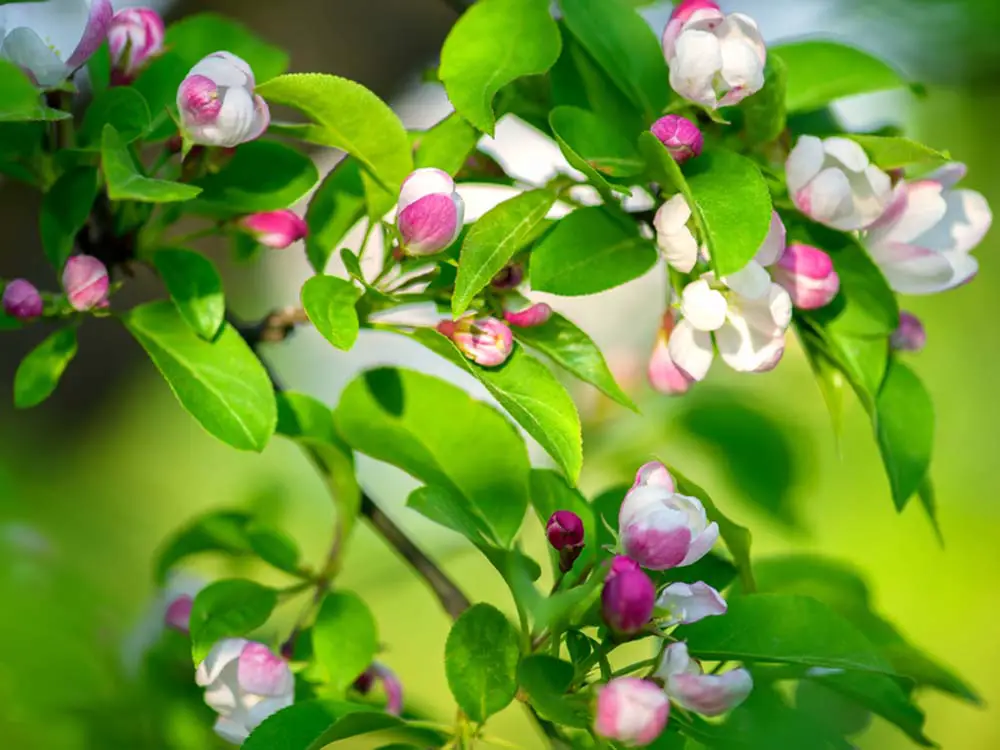
It can be difficult to correct soil drainage once a tree is already planted, unless the tree is young enough that it can be moved to a better location.
Learn more about how to adjust soil drainage here: Soil Drainage for Fruit Trees: Everything You Need to Know
If your tree is planted too deep – and if it’s still pretty young – it may not be too late. Carefully dig around the tree, then use a shovel to lever the root ball up to the right height. The top of the roots should sit just below the surface of the soil. Pack soil tightly underneath the raised root ball to keep it in place, then backfill the planting hole.
Once you’ve made the necessary corrections (in my case, raising the tree up to the right planting depth), you can accelerate bud break by trimming the terminal buds (the buds on the tips of branches). This may not always be appropriate, as it will affect the tree’s overall form by influencing which buds wake up when.
Removing the terminal buds signals the buds below to break and send out growth (source). I tried this with my struggling apple tree, in addition to raising the tree to the correct level, and it began leafing out in just a few days.

